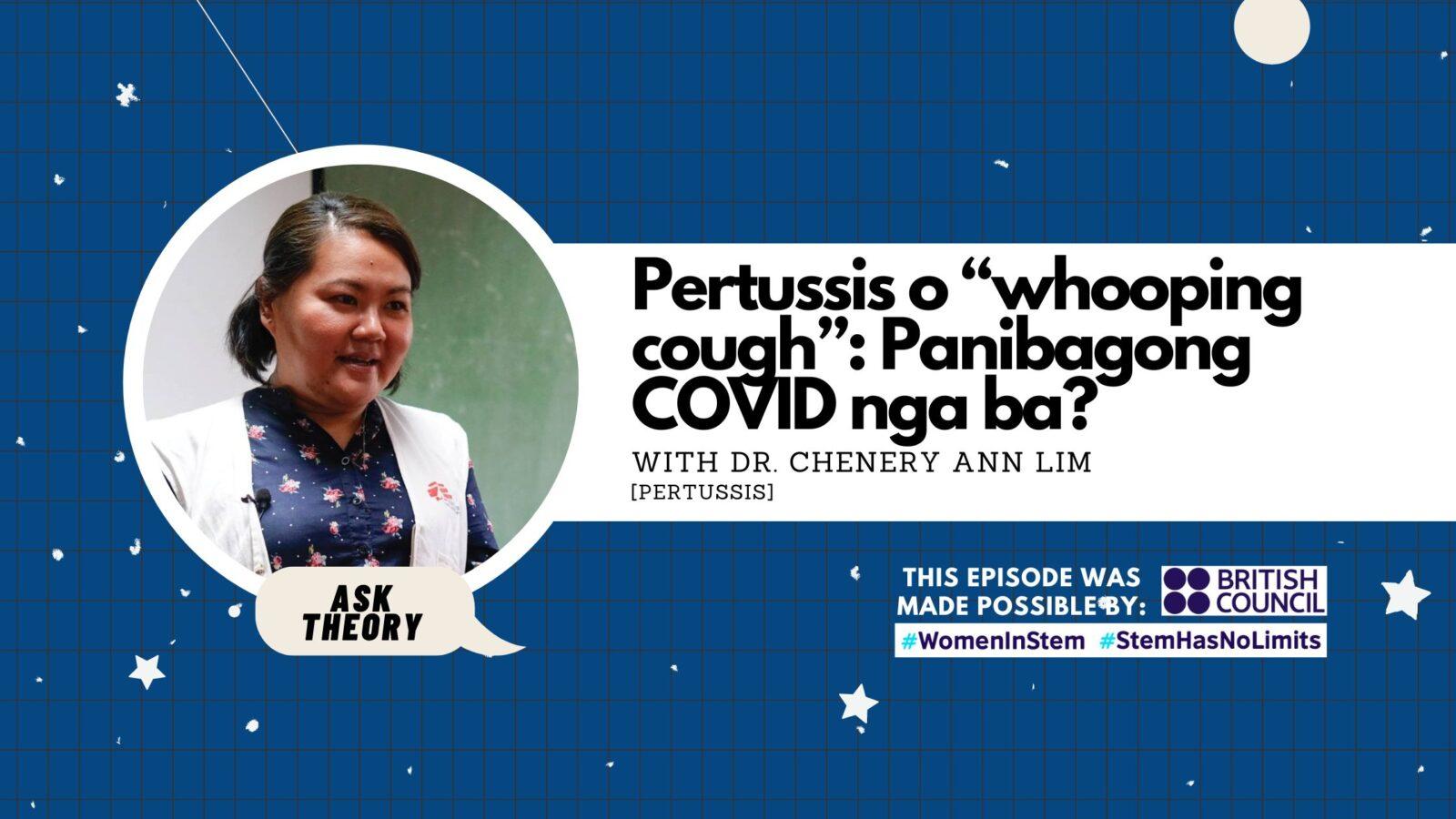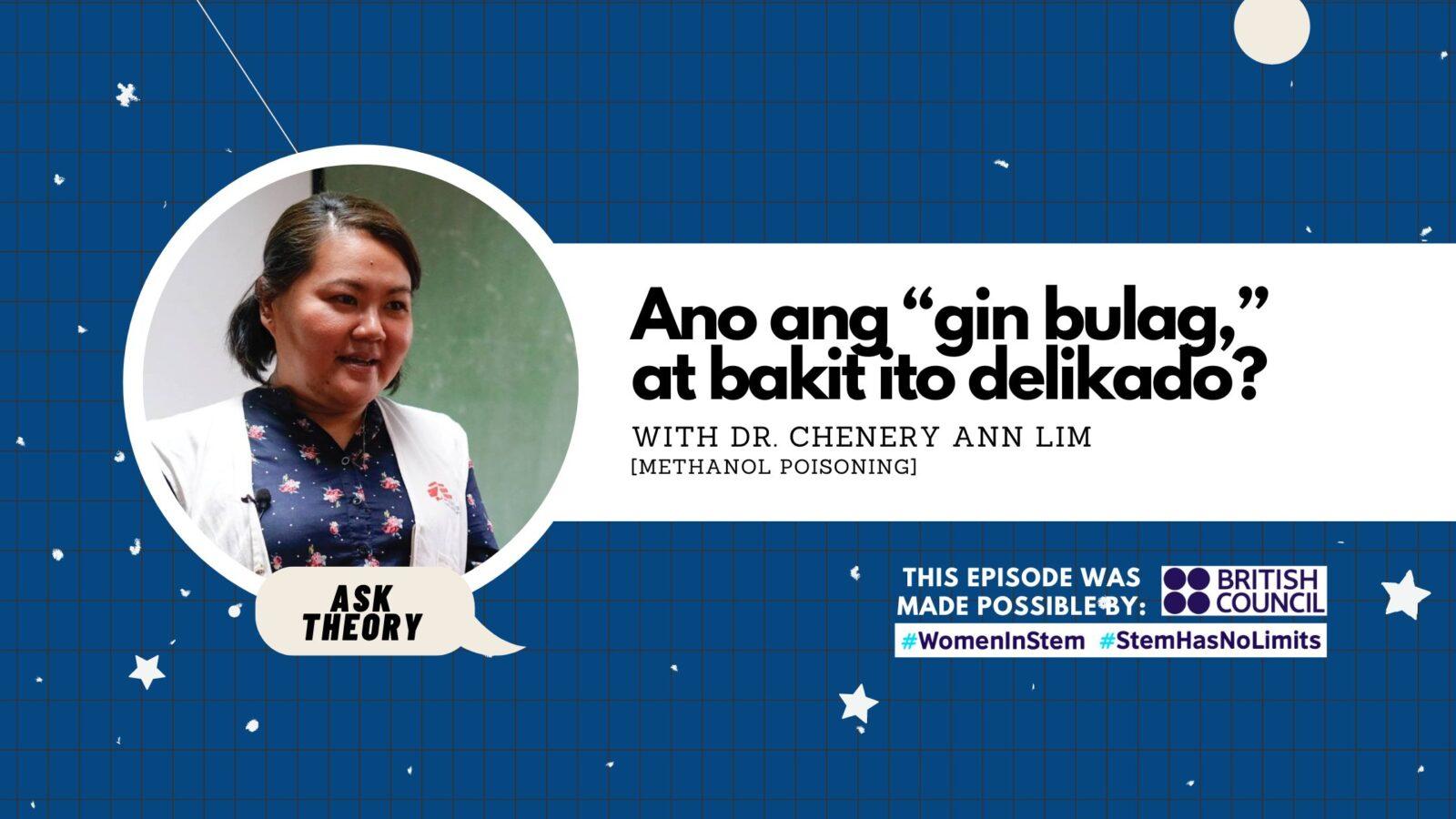
Hosted by EIC Mikael Angelo Francisco, Ask Theory shines the spotlight on Pinoy scientific brilliance, in a fun and entertaining “kwentuhan” format. Each episode of Ask Theory features a Pinoy scientist from one of the various scientific disciplines. In a very casual conversation, guests explain what they do in simple terms, as well as share their fascinating stories: how they got into science, the challenges they face, what motivates them to pursue their fields, what future scientists from the Philippines can look forward to, and so much more.
Episode 140: Can The World’s Biggest And Weirdest Flower Be Saved?
Listen to Ask Theory Episode 140 here:
TRANSCRIPT:
The entire Rafflesia genus is an enormous enigma, in more ways than one.
Each Rafflesia plant bears a single, massive flower, often brown or red with white spots. Typically paired with each blossom’s maroon color is a miasmic odor, along with an internal structure that mimics animal fur and even the ability to generate its own heat. As a result, the foul-smelling, five-petaled flower becomes bizarrely evocative of death and decay. It’s no wonder that the largest species, Rafflesia arnoldii — which produces the biggest individual flower on the planet — is also called the “corpse flower” or “corpse lily.”
The conspicuous components of Rafflesia are already hard to miss. But what’s even more difficult to ignore is everything we don’t see: Every member of this genus has no stems, no shoots, no leaves, and no roots. Rafflesia species are endoholoparasites, meaning they possess two key traits. They quietly infect their host plants (certain species of Tetrastigma grapevines) and remain hidden until they’re ready to emerge. Additionally, they rely on their hosts for their carbon needs, as they are incapable of photosynthesis.
It’s easy to wonder why or how Rafflesia species grow to be so enormous, or if they could even really be counted as plants in the first place. Experts have proposed some plausible answers to the first question. Some suggest that their size helps them attract pollinators; others say that they only grow as big as their hosts allow them to, as far as both sustenance and structural integrity are concerned. In colloquial terms, this could either be a feature or a bug.
Still, for something that has been known by science for more than two hundred years, information about Rafflesia is oddly scarce, despite it being such a fascinating genus. According to Dr. Jeanmaire Molina, a plant evolutionary biologist and associate professor at Pace University in New York, it’s because not many scientists have the patience and resources to undertake Rafflesia studies. Molina emphasized that Rafflesia species are notoriously challenging to observe, obtain, or grow outside of their remote forest habitats in Southeast Asia.
The fact that Rafflesia plants are so difficult to study means that there is much about them that we don’t know yet — and thus, much to learn about them. For example, experts can’t say for sure why Rafflesia species are only known to thrive on some (not all) Tetrastigma vines. What makes this even more baffling is that the plant family to which Rafflesia belongs evolved as early as the Cretaceous, way before Tetrastigma did. In other words, it’s likely that now-extinct vine species served as prehistoric Rafflesia hosts — and for some reason, only Tetrastigma vines fulfill that role today. Molina suspects that ecological factors may be involved, and that only Tetrastigma species with a particular chemistry and microbiome can be suitable Rafflesia hosts.
In 2014, Molina and Dr. Michael Purugganan, Silver Professor of Biology at New York University’s Center for Genomics & Systems Biology, were part of a team that co-authored a paper about the possible loss of the chloroplast genome in Rafflesia, a finding that made sense given Rafflesia’s inability to produce carbon dioxide on its own. Recently, the two worked with a different set of scientists spread across four countries (Canada, Indonesia, the Philippines, and the United States) on another pioneering Rafflesia study. Published in the open access journal Plants People Planet, it involved assembling a transcriptome (a set of RNA transcripts from the genome) of R. speciosa seeds for the first time. The team created the transcriptome from scratch, using RNA they extracted from the seeds. They then compared the transcriptome with four other plants in order to gain new insights on Rafflesia’s biological processes.
As it turns out, Rafflesia’s genetic and metabolic seed pathways resemble those of the other plants, but with a couple of twists. For one, it appears that despite not being closely related, Rafflesia evolved similar characteristics as other parasitic plants — an example of convergent evolution, suggesting that they gradually developed those traits to ensure the survival of their respective genera.
Additionally, they found no significant traces of genes involved in fungal symbiosis in the Rafflesia transcriptome. Purugganan explained that this finding is significant because even though superficially, the symbiosis of fungi with plants looks similar to Rafflesia and Tetrastigma, they seem to be using different genes – which means that symbiosis can evolve in different ways in different sets of organisms.
The team also found evidence of a gene in Rafflesia that was possibly obtained from Tetrastigma — specifically, one associated with the vine’s internal defenses. This process of horizontal transfer, or the passage of genetic information from one organism to another sans sexual reproduction, is commonly seen in bacteria and certain single-celled organisms, but not in plants. Thus, one can think of Rafflesia as a Trojan horse, successfully bypassing the host’s immune system by making itself appear, on a genetic level, that it belongs there. In other words, a kind of “genomic camouflage or mimicry.”
One could say that the challenge of Rafflesia conservation is as gargantuan as the plant’s world-famous flowers. So monumental is the task, in fact, that out of the many efforts to grow the genus ex situ (outside of its natural habitat), very few have truly accomplished it. Bogor Botanical Garden in Indonesia is one example; the institution achieved success with its experiments on R. patma.
According to Professor Pastor Malabrigo from the Department of Forest Biological Sciences at the College of Forestry and Natural Resources (CFNR) of the University of the Philippines Los Baños (UPLB), it is particularly difficult for Rafflesia plants [to be grown ex situ] because we know very little about them in terms of seed biology and propagation techniques.
Along with CFNR-UPLB teaching associate Adriane Tobias and Oxford University’s Dr. Chris Thorogood, Malabrigo went on an educational trip to Bogor in November 2022. There, they not only observed the growth of Bogor’s Rafflesia plants, but also learned about the process of ex situ propagation by grafting, the sole technique that worked for the institution after two decades of experimentation.
To the average person (or perhaps, to someone with a green thumb), the process may sound simple and straightforward. It involves obtaining a Rafflesia-infected Tetrastigma vine, and then grafting it onto an uninfected Tetrastigma vine elsewhere as its scion. Equally important is to make sure that transporting the infected Tetrastigma sample would not take more than 24 hours, because the longer it takes to graft the plant, the lower the chance it will survive.
Malabrigo and his colleagues opted to use a different species — R. panchoana, from Mt. Makiling in Luzon — due to its close proximity to the grafting site at the UP Land Grant. Since both Mt. Makiling and the Land Grant fall under the jurisdiction of UPLB, it made the process of obtaining the necessary paperwork much easier. In addition, R. panchoana has a shorter reproduction cycle than R. patma. The team hopes to see the fruits of their labor in two years.
Non-scientists tend to perceive the words “parasite” and “predator” in a negative light. However, these organisms play crucial roles in the ecosystems where they thrive — and the parasitic Rafflesia is certainly no exception.
Parasitism is a process that is essential in maintaining ecosystem balance, ultimately increasing species diversity in an ecosystem. The parasite keeps the host population in check, preventing overgrowth that can negatively impact other species and reduce diversity. In the case of the Rafflesia plant, its fruits and seeds serve as food sources for ants and small mammals, who in turn act as the plant’s dispersal vectors, transporting seeds to different areas in their shared habitats. For Molina, this is enough to consider Rafflesia plants as keystone species in their ecosystems.
Tobias mentioned the intricate relationship that Rafflesia plants share not only with their hosts, but also with their pollinators. To carrion flies, Rafflesia are like rotting animal corpses on the forest floor; in other words, irresistible. Rafflesia’s floral chamber is designed to trap the carrion flies, increasing the duration of their visit and the likelihood of contact with the stigma or pollen-producing anthers.
In Indonesia, Rafflesia plants are believed to have aphrodisiac properties, and they are incorporated into tonics, energy drinks, and fertility supplements for women. Some even boil Rafflesia buds, using the resulting broth as a remedy for fever, headaches, and body aches. Experts have also documented the use of Rafflesia in traditional medicine in Poring, Sabah.
Interestingly, in the Philippines, the lack of general knowledge about Rafflesia may have served as equal parts boon and bane for the conservation of the genus.
Some indigenous communities are said to believe that Rafflesia possess bad spirits, and that something bad will happen to you if you touch them. In a way, this helps conserve Rafflesia species, since nobody wants to disturb them.
That’s not to say, of course, that indigenous groups are completely ignorant when it comes to Rafflesia. After all, they have extensive firsthand experience with the plants — so much so that even scientists learn a lot from the locals. Still, there is limited understanding about the significance of Rafflesia in the Philippines, with most of it coming from anecdotal observations from fieldwork.
Sadly, inadequate familiarity with Rafflesia has led some Filipinos to mistake it for an unrelated but similarly stinky genus, Amorphophallus — and their disdain for the foul-smelling flower reportedly drives them to intentionally destroy known Rafflesia sites, such as those in the Mts. Banahaw-San Cristobal Protected Landscape. Others with good but ultimately misguided intentions pluck Rafflesia flowers from their natural habitats to grow them elsewhere, completely unaware that the endeavor itself is a tremendous challenge even for botanical experts.
Currently, there are 15 endemic Rafflesia species in the Philippines recognized and accepted by Plants of the World Online, a digital database of international flora curated and maintained by the United Kingdom’s Kew Royal Botanic Gardens. This is the largest number of unique Rafflesia species in a single country. Tragically, all Philippine Rafflesia species are narrowly distributed — and teetering dangerously close to extinction.
Regardless of how desensitized we may have become after hearing it so frequently, “endangered” is not a word that scientists and conservationists throw around lightly. Red List assessors like Malabrigo follow a specific set of criteria to determine the conservation status of a given species, including how much of its known habitat areas have diminished and the rate at which its population has decreased. With such data, conservationists can reasonably assess just how threatened a species’ population is.
At present, there is no law in the Philippines designed specifically for Rafflesia conservation, but there is an administrative order offering blanket protection for all threatened Philippine plant species. In 2017, the Department of Environment and Natural Resources (DENR) issued AO 2017-11. It contains a list of recognized threatened plant species in the Philippines (including 12 of the Rafflesia species known to exist in the country at the time) and prohibits anyone from collecting or trading them. Section 4 of the document states that all other native plants absent from the list — such as the other endemic Rafflesia species we now know about — are “non-threatened,” while section 8 promises that the existing list shall undergo regular review. As of this recording, the six-year-old list has yet to be updated.
Tobias clarified that although there is no species-specific conservation program at the national level, some local government units along with the DENR City Environment & Natural Resources Office (CENRO) have declared critical habitat areas where Rafflesia species are occurring, in sites that are not covered by the Protected Areas system.
Still, compared to countries like Malaysia — which has conservation programs and initiatives to increase the involvement of indigenous groups in Rafflesia conservation — there is plenty of room for improvement for the Philippines, especially considering how it’s the world’s center of Rafflesia diversity.
According to Malabrigo, the enigmatic Rafflesia has the potential to become the flagship flower for plant conservation and achieve the same iconic status the giant panda holds for animal conservation. But this can only happen with increased awareness about these massive, mysterious blossoms. Purugganan also believes that Rafflesia deserves to be studied as an icon of Philippine plant biodiversity.
But perhaps Molina put it best: “To lose any of our endemic Philippine Rafflesia species is a catastrophic loss not just to Filipinos but to the world; they are evolutionary marvels at least 50 million years in the making that can never be replaced.”
(Adapted from an article written by Mikael Angelo Francisco)
The Ask Theory Podcast is available via these platforms — make sure to subscribe, as we’ll be releasing a new episode every week:
Spotify: https://open.spotify.com/show/1GDcxBwETsD4KM1EmTr1aI
Apple Podcasts: https://podcasts.apple.com/ph/podcast/ask-theory/id1550251048
Anchor: https://anchor.fm/ask-theory
Breaker: https://www.breaker.audio/ask-theory
Google Podcasts: https://www.google.com/podcasts?feed=aHR0cHM6Ly9hbmNob3IuZm0vcy80OTAyMWNjMC9wb2RjYXN0L3Jzcw==
Pocket Casts: https://pca.st/gv6jxkki
RadioPublic: https://radiopublic.com/ask-theory-WJkbLJ
Music: Hopeful Cinematic Ambient by bdProductions; My Mysterious Planet by Free Music









